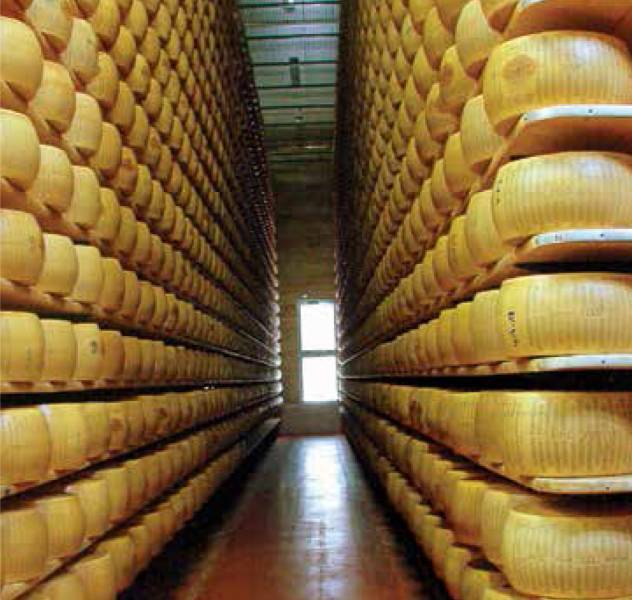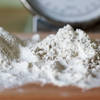Being Italian Versus Sounding Like One
According to recent data, in 2009, 20 billion euros worth of authentic Italian food products were exported, while roughly 60 billion euros of low-quality imitation products were sold at a discount price around the globe. This means that, for every can of tomato sauce or authentic peeled tomato, for every carton of pasta or bottle of extra virgin olive oil from Italy, there are three products that use bogus Italian images, colors, labels, and names to trick consumers.
The numbers change, however, if we examine the issue geographically. The North American
market rakes in 24 billion euros for “Italian Sounding” products, compared to just 3 billion euros it earns for authentic exports. That means that only one out of eight products is actually Italian.
Cheese, and other scandals
Cases of fraudulence aside, our image has suffered indirectly, such as during the latest scandal surrounding a few cheese manufacturers in the U.S., when a series of articles appeared on websites and newspapers revealed that “parmesan” cheese distributed and sold in the U.S. contains non-dairy ingredients such as wood pulp cellulose.
The study began with a Pennsylvania cheese manufacturer in winter 2012 and has since spread to several American producers, leading to the discovery of high percentages of cellulose content, for the most part consisting of ground wood pulp and paper in four different brands distributed by major national chains. The study found levels of cellulose as high as 8.8%, while experts from a research center in Wisconsin say that an acceptable level is between 2 and 4%. (Is cellulose even acceptable?)
Trying to quell the polemical tone, one professor from the Department of Nutrition and Food Studies at New York University came out saying that cellulose may not necessarily be cancerous; it may actually be healthy. In fact, it’s considered a fiber and is present in laxatives and many other drinks. And in the case of cheese, it acts just like a fiber. Despite the fact that none of these brands is Italian, unsuspecting consumers could easily be confused by the Italian-sounding name.
The discovery of wood in cheese is only the latest scandal regarding what we eat. In November, a few of the most widely distributed olive oil manufacturers—this time in Italy—were accused not only of failing to label the exact origins of their product but of selling low-quality “virgin” oil as “extra virgin” oil.
The list of products being hawked as Italian may have no end: estimates suggest that over 60 billion products are sold as Italian even though in actuality they are not Italian.
Among the most frequently “forged” products are tomatoes, sauces, vinegar, wine, and cold cuts. Only a few of the latter are from Italy. For example, only three kinds of DOP prosciutto can be imported in the US: Parma, San Daniele and Toscano. Furthermore, in the U.S., you still cannot find cured meats like salami and coppa that are made by Italians with 100% Italian ingredients.
Use the language properly
Continuing to slap Italian names on products that come from God knows what country confuses consumers, who can’t tell up from down. Of course, I don’t have a magic solution to the problem, but one important strategy for proving the origin and quality of a product is to use the language properly, and greater education concerning who chooses to sell Italian products and who abuses them.
Why?
Firstly, because certified products (bearing the label DOP, IPG, DOC, DOCG, etc.) bear names that indicate a particular quality and origin, names that acts as a kind of safeguard.
There can’t be a real Parmigiano Reggiano and a fake one, since the very fact that a product is called Parmigiano Reggiano means it isn’t fake. Nor can the original contain cellulose!
Proper language and correct spelling should be the first indicator for making wise purchases.
So let’s start calling products by their god given names.
My name is Dino Borri, not Daino Bore. Parmigiano Reggiano is not ‘parmesan.’ Neither is Grana Padano ‘grena,’ nor gorgonzola ‘bergonzola,’ nor Mortadella di Bologna ‘boloni.’
Retailers, importers and restaurateurs who use and publicize Italian products in the world must act as ambassadors of these cultural/gastronomic basics, and instate a policy of saying what is from Italy and what isn’t.
Food, like culture, depends on language
I believe in the words of my dear friend and ex-vice consul of New York Lucia Pasqualini when she said: “Remaining aware of one’s mother tongue is fundamental for all Italians who decide, whether by choice or necessity, to live abroad. Italy has been and still is a country of emigration. The Direction of Italians Abroad and the Ministry of Foreign Affairs are responsible for helping Italian citizens who reside abroad. Their responsibilities include the promotion of the Italian language in the Italian community, that is to say, the children of Italians who live abroad and want to sustain a relationship with their country of origin.”
I would also add that everyone who loves food must love Italian products, and Italians have to be the first ones to teach our foreign friends the proper names of our products. Culture depends on language, as does peace and unity.






































i-Italy
Facebook
Google+
This work may not be reproduced, in whole or in part, without prior written permission.
Questo lavoro non può essere riprodotto, in tutto o in parte, senza permesso scritto.